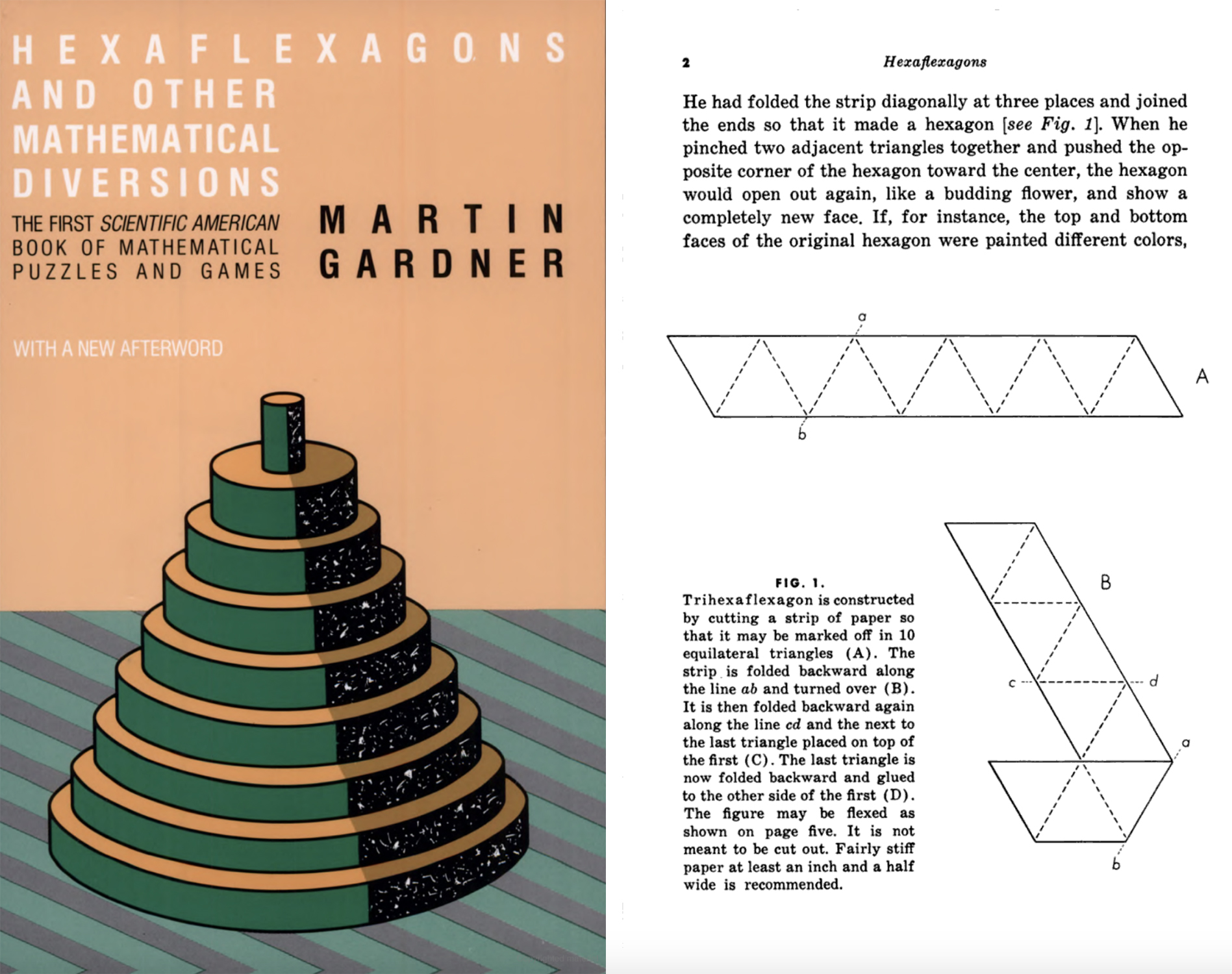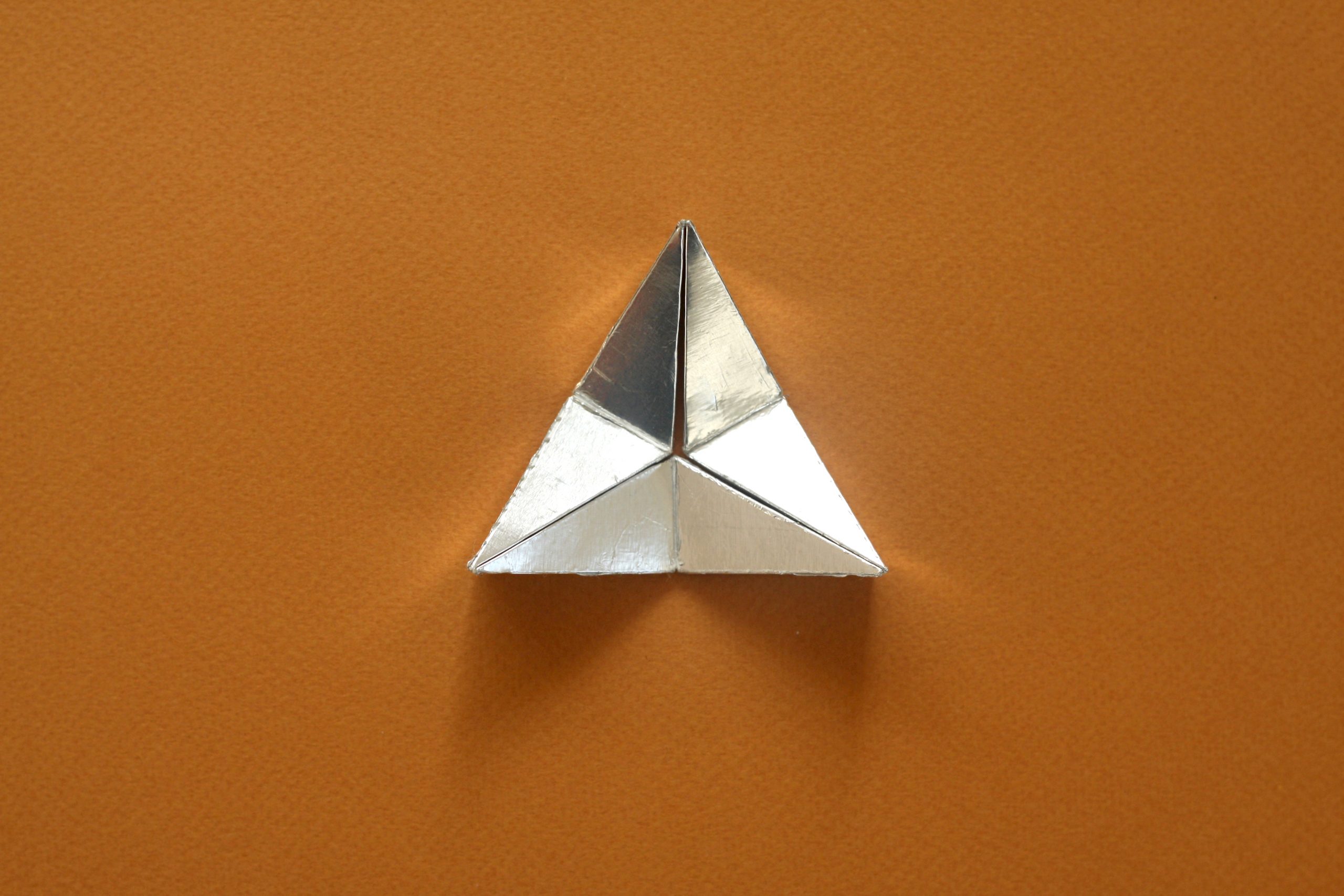Kaleidocycles
—PLAY

Whilst doing a project on modern architecture and making a lot of origami constructions, I stumbled across these strange and hypnotic objects.

Pretty far down a research rabbithole I had come across Martin Gardner and his Hexaflexagons. These are 2D paper constructions that conceal different surfaces of the long strip of paper from which they’re made, eventually revealing themselves through a sequence of folding.
I can’t say I understand the maths he uses these as a means to explain, but they got me onto my next discovery and for that I’m eternally grateful! I had happened upon flexagons and kaleidocycles – terms for 3D shapes that can infinitely fold on themselves and are lovely things to both make and play with.


The most common flexagon how-to videos I found online were for the confusingly (and maybe mistakenly) named hexaflexagon – not the same thing at Gardner’s – and from then on I was hooked.
The best resource I found was the wonderful website by Gijs Korthals Altes which is a goldmine of information on all things polyhedra. Just the names of the shapes he catalogues are great – Kepler-Poinsot polyhedra? Antiprisms? Yes.
I made some kaleidocycles with more pieces that remain open shapes throughout the folding cycle.


And others with slim faces that opened up wide and closed completely to triangles. I really like the variation with these, they are such a surprise to handle.
There are still so many more of these I’d like to try, and as each one takes about an hour to do, they’re the perfect little making project for a rainy day.
There’s also something lovely about the ephemeral nature of them. They last a while, but inevitably the paper hinges get a bit soft and they come apart – this is somewhat expedited if you have a small child around who finds them very exciting too…
